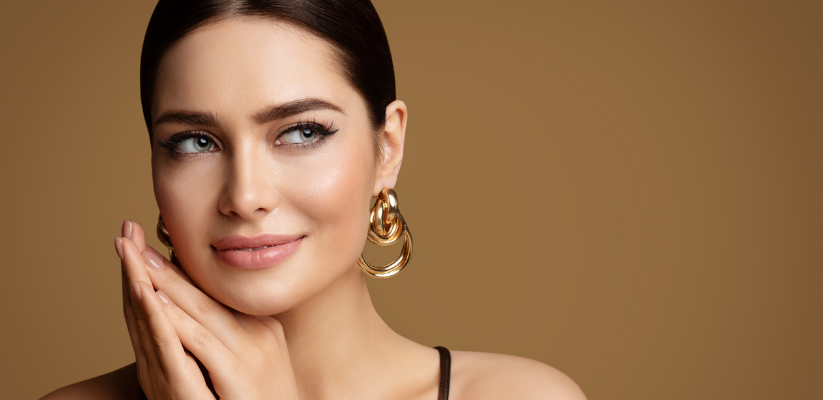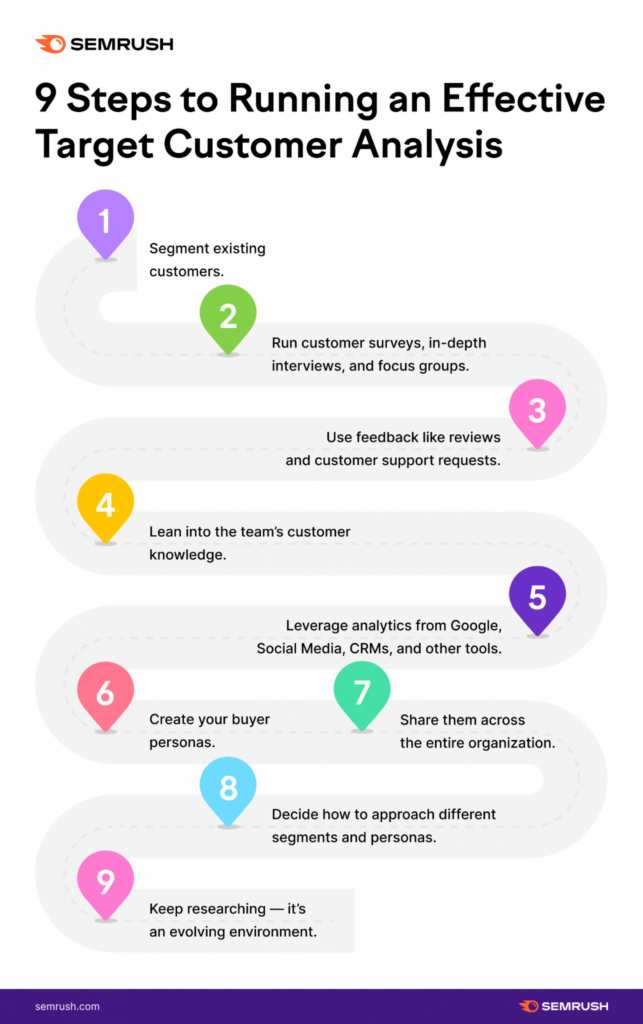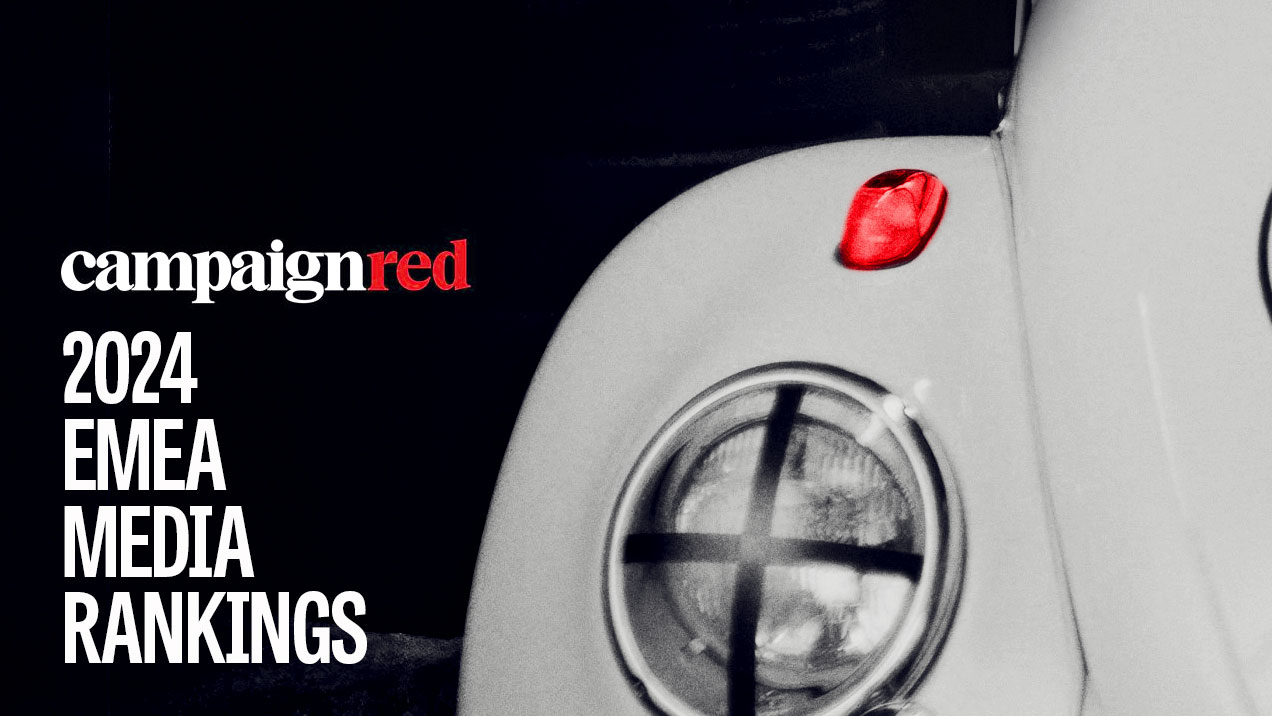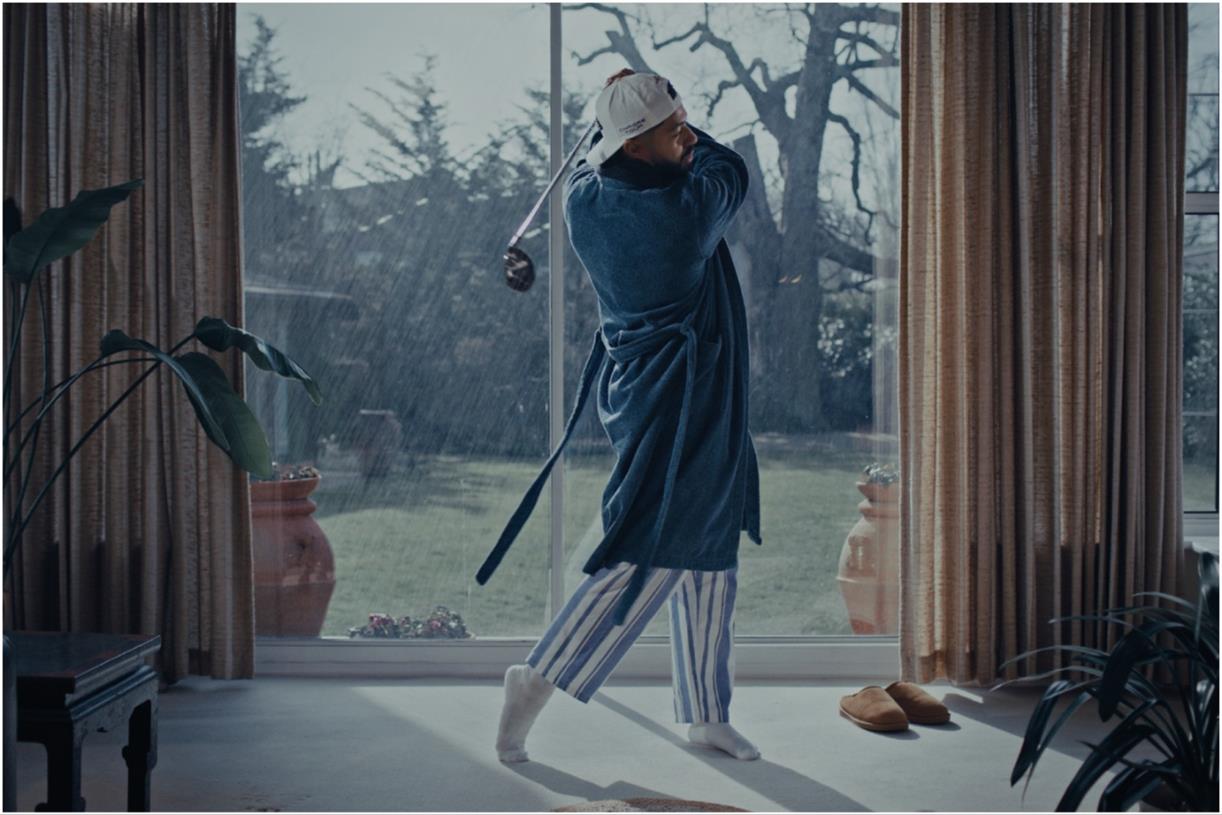Craft Compelling Buyer Personas: A Jewellery Brand Guide with Examples
Drum roll, please! Welcome to your go-to guide for deep knowledge and practical examples of buyer personas in the jewellery business. We’ve sprinkled in a dash of glimmer for good measure! Understanding your audience is at the heart of...

Drum roll, please! Welcome to your go-to guide for deep knowledge and practical examples of buyer personas in the jewellery business. We’ve sprinkled in a dash of glimmer for good measure!
Understanding your audience is at the heart of successful jewellery marketing, transcending mere strategy to become the cornerstone of your success. And this guide is your compass through the world of buyer personas, essential for tailoring your luxury branding to the unique needs and desires of your customers.
Whether you’re a seasoned marketer or fresh in the industry, prepare to gain valuable insights into the art and science of persona creation. We’ll explore buyer persona jewellery examples to inspire you and share best practices to ensure your marketing efforts always hit the mark.
The Art and Science of Persona Creation
The journey of buyer persona creation for a jewellery business starts with an in-depth exploration of your existing clientele, each representing a unique facet of your market. You should delve into qualitative and quantitative research, where insights surface like precious jewels, revealing invaluable knowledge.
However, creating these buyer personas before building jewellery marketing campaigns is not without challenges; understanding and addressing each persona’s specific pain points, such as budget constraints, ethical sourcing concerns, or the need for personalized experiences, is critical for developing truly effective marketing strategies that resonate deeply with your audience.

Customer feedback, from reviews to support interactions, is an essential source of insight, offering a window into your audience’s preferences and expectations. Insights from your customer-facing teams are equally vital, as they bring a human touch to the data, enriching the narrative of your buyer personas.
Using analytics tools such as Google Analytics and your CRM system is also fundamental to navigating through the wealth of data, helping you uncover insights as valuable as rare diamonds. So, create buyer personas that articulate these insights clearly and compellingly, ensuring they are both memorable and easily communicable across your organization.
Keep in mind that it’s truly crucial for every team member, from design to sales, to understand and appreciate these personas, as they form the foundation of your marketing strategy.
Decoding the Components of a Jewellery Brand Buyer Persona
Creating a buyer persona involves delving into both demographic and psychographic details which means understanding various facets of your customers.
Consider a woman buyer persona for jewellery, which would encompass not just basic demographic information like age, income, and occupation but also delve into deeper psychographic elements such as lifestyle, personal values, and aesthetic preferences. On the other hand, a man buyer persona for jewellery might emphasize different aspects, such as style preferences, brand loyalty, and purchasing behavior.
These components are crucial in painting a comprehensive picture of who your customers are, what drives their buying decisions, and how they relate to your brand. To not get confused by all these details, working with experts from luxury marketing agencies is what we suggest!
Building Your Buyer Personas
Once you’ve gathered the responses, it’s time to embark on the journey of persona creation.
You’ll be navigating through a sea of information, so kick off this adventure by categorizing your feedback into groups based on similarities.
Grouping Similar Answers: Analyze the collected feedback extensively to identify recurring themes and patterns. These insights are key to developing diverse personas, highlighting the common characteristics across different segments of your audience.
Crafting Individual Personas: After categorizing the feedback, focus on creating detailed personas. Approach this task with the precision of a jeweler, paying close attention to every aspect of your personas, from their background to their preferences.
A Name and a Face: Assign names and use photos to give your personas a real-life feel, making the data more tangible and relatable.
Demographic Depth: Include key demographic details like age, income, and relationship status to add depth to your personas.
Voices of Customers: Incorporate actual customer quotes from your surveys. This brings authenticity to the personas, reflecting real desires, needs, and perceptions of your jewelry.
Strategizing for Each Persona: Tailor your marketing to meet the unique preferences of each persona. For example, if a persona highly values expertise in jewelry, ensure your marketing reflects your knowledge and experience.
Creating a Persona Blueprint: Compile each persona into a concise, one-page document. This serves as a handy reference and helps ensure your marketing efforts are precisely targeted to match each persona’s characteristics and preferences.
Understanding the Distinct Needs of B2C and B2B Personas in Jewellery
As it is for various industries, understanding the divergent needs of B2C (Business to Consumer) and B2B (Business to Business) personas is crucial for the field of jewellery businesses.
B2C focuses on individual customers, tailoring marketing to personal tastes, emotions, and lifestyle choices. This includes creating women and men buyer personas in jewellery, emphasizing personal engagement and brand identity. In contrast, B2B targets businesses like retailers and designers, prioritizing bulk purchasing, quality assurance, and reliable supply.
The marketing here leans towards building long-term relationships, emphasizing product consistency and professional trust. While B2C thrives on emotional storytelling and personal connection, B2B strategies hinge on reliability, scalability, and maintaining consistent quality.
For instance, a B2C campaign might highlight eco-friendly jewellery for environmentally conscious consumers, whereas a B2B approach would focus on a jewellery manufacturer’s reliability and exclusive designs for retail chains. Understanding these distinct needs helps in crafting targeted strategies for each audience, ensuring more effective marketing and stronger customer relationships in both sectors.
Examples of Buyer Personas for a Jewellery Brand
Let’s explore a diverse range of buyer persona jewellery examples, encompassing different demographics, genders, and target audiences, to inspire you. We’re more than ready to share best practices to ensure your marketing efforts are effectively tailored and always hit the mark!
The Luxury Enthusiast
Demographics:
Age: 30-50 years old
Gender: Female
Income: High-earner
Occupation: Professional or entrepreneur
Location: Urban areas
Psychographics:
Passionate about luxury brands
Appreciates exquisite craftsmanship and unique designs
Seeks jewellery as an investment and a symbol of status
Willing to spend a significant amount on high-quality pieces
Shopping Habits:
Frequents exclusive jewellery boutiques and department stores
Researches extensively before making a purchase
Enjoys personalized customer service and exclusive shopping experiences
Jewellery Preferences:
Favors statement pieces that make a bold statement
Prefers fine gemstones and precious metals
Embraces classic designs with a modern twist
The Trendy Millennial
Demographics:
Age: 22-35 years old
Gender: Mixed
Income: Mid-range earner
Occupation: Diverse range of professions
Location: Urban and suburban areas
Psychographics:
Highly influenced by social media and fashion trends
Seeks jewellery that reflects their individuality and style
Values affordability and ethical sourcing
Embraces bold and innovative designs
Shopping Habits:
Shops online, at fast-fashion jewellery brands, and independent designers
Relies on social media influencers and reviews for recommendations
Appreciates interactive and engaging shopping experiences
Jewellery Preferences:
Favors trendy and statement-making pieces that keep up with the latest trends
Enjoys layering and experimenting with different styles
Prefers mixed metals and semi-precious gemstones
The Thoughtful Gift-Giver
Demographics:
Age: 35-55 years old
Gender: Male
Income: Mid-range to high-earner
Occupation: Diverse range of professions
Location: Urban and suburban areas
Psychographics:
Seeks meaningful and personalized gifts for special occasions
Values quality and craftsmanship
Appreciates the sentimental value of jewellery
Considers the recipient’s preferences and style
Shopping Habits:
Conducts thorough research, often seeking expert advice
Frequents traditional jewellery stores and online retailers
Appreciates personalized service and gift-wrapping options
Jewellery Preferences:
Favors classic and timeless designs that hold enduring value
Prefers fine gemstones and precious metals
Considers sentimental pieces, such as engraved or birthstone jewellery
The Bride-to-Be
Demographics:
Age: 25-35 years old
Gender: Female
Income: Varies
Occupation: Varies
Location: Varies
Psychographics:
Seeking engagement and wedding rings
Desires jewellery that reflects her personal style and taste
Appreciates heirloom-quality pieces
Values tradition and symbolism
Shopping Habits:
Conducts extensive research online and in-person
Seeks expert advice from jewelers and wedding consultants
Appreciates personalized service and attention to detail
Jewellery Preferences:
Favors classic and timeless designs
Prefers fine gemstones and precious metals
Considers sentimental pieces, such as engraved or birthstone jewellery
The Fashion-Conscious Woman
Demographics:
Age: 20-50 years old
Gender: Female
Income: Mid-range to high-earner
Occupation: Varies
Location: Urban and suburban areas
Psychographics:
Passionate about fashion and trends
Seeks jewellery that complements her wardrobe and style
Appreciates unique and eye-catching designs
Enjoys experimenting with different jewellery styles
Shopping Habits:
Shops at designer boutiques, department stores, and independent jewellery stores
Follow fashion trends and influencers for inspiration
Appreciates interactive and engaging shopping experiences
Jewellery Preferences:
Favors trendy and statement-making pieces
Prefers mixed metals and semi-precious gemstones
Enjoys layering and experimenting with different styles
The Professional Gentleman
Demographics:
Age: 35-65 years old
Gender: Male
Income: Mid-range to high-earner
Occupation: Professional
Location: Urban and suburban areas
Psychographics:
Appreciates fine craftsmanship and quality
Seeks jewellery that reflects their professional status
Prefers classic and understated designs
Values sentimental and personalized pieces
Shopping Habits:
Frequents traditional jewellery stores and online retailers
Conducts thorough research before making a purchase
Appreciates personalized service and expert advice
Jewellery Preferences:
Favors classic and timeless designs
Prefers fine gemstones and precious metals
Considers personalized pieces, such as engraved cufflinks or signet rings
A Real-World Example of Buyer Persona for Jewellery Business: Katie Dean Jewellery
Let’s turn to a real-world example to see how these principles come to life in the jewelry industry.
Consider the case study of Katie Dean Jewelry, as highlighted by Joy Joya. This insightful example demonstrates how an actual jewelry brand, Katie Dean Jewelry, successfully identified and tailored its marketing strategies to its specific audience segment.
By carefully analyzing their product range and marketing approach, Katie Dean Jewelry crafted a detailed audience persona that significantly enhanced their connection with their target market. This case study underscores the importance of understanding and engaging with the unique characteristics and preferences of your audience, a critical aspect of creating effective buyer personas in the jewelry sector.
This integration not only provides a tangible, real-life application of buyer persona creation but also reinforces the importance of detailed market analysis and targeted marketing strategies in the jewelry industry.
Best Practices and Common Mistakes
When sculpting buyer personas for the jewelry market, treading carefully is key. These representations are intricate and dynamic, requiring constant refinement as market trends and customer preferences evolve. The primary caution here is the danger of oversimplification. Reducing your personas to a few broad strokes can lead to a lackluster understanding of your audience, missing the rich tapestry of their true motivations and desires.
Equally dangerous is the trap of stereotyping. Crafting personas based on assumptions or clichés can mislead your marketing strategies, risk alienating segments of your audience, and potentially cause your luxury advertising to target the wrong groups.
That’s why it’s essential to delve deeper, acknowledging the diversity and uniqueness of your customers.
The effectiveness of your personas isn’t just about their creation but also about how they are used and interpreted. Relying solely on gut feelings without consulting actual data can lead your strategies astray. Use metrics to critically assess the impact of your personas on sales and engagement.
This analysis should go beyond mere numbers; it’s about decoding the nuances and subtleties that these figures represent.
Conclusion
In this guide, we’ve journeyed through the art of crafting compelling buyer personas, focusing on both women’s and men’s buyer persona jewellery, essential for any successful jewelry brand. From understanding your diverse clientele to applying real-world examples like Katie Dean Jewelry, we’ve covered the spectrum of creating personas that resonate with both women and men in the jewelry market.
Keep in mind that the key to success lies in continuously refining these personas, ensuring they mirror the evolving tastes and preferences of your audience. As you embark on this journey of discovery and connection with your customers, let these insights guide your path to creating marketing campaigns that sparkle with relevance and allure.
Now, take these learnings and start crafting your own irresistible buyer personas!

 Lynk
Lynk 










_1.png)




















